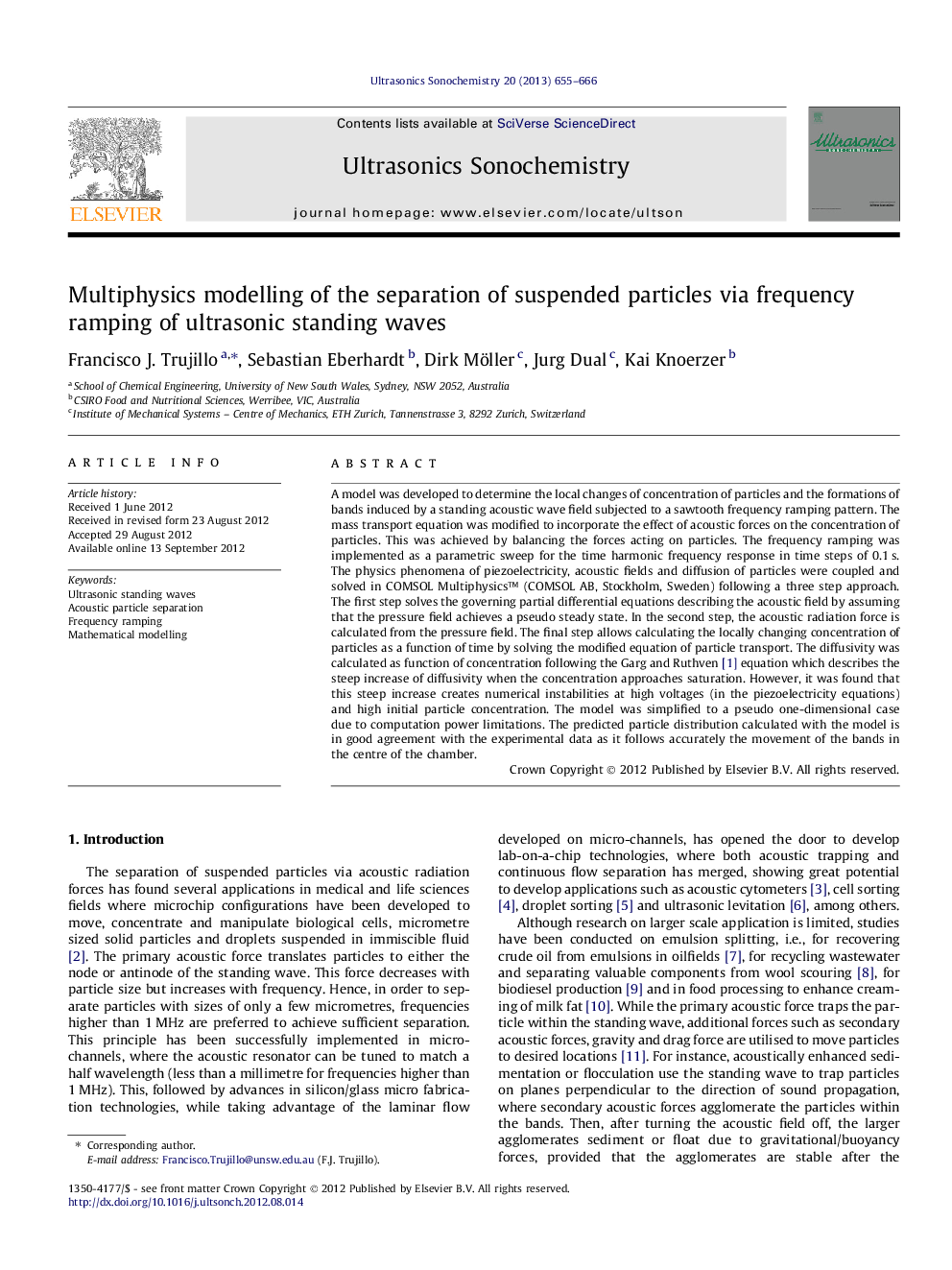| Article ID | Journal | Published Year | Pages | File Type |
|---|---|---|---|---|
| 1265320 | Ultrasonics Sonochemistry | 2013 | 12 Pages |
A model was developed to determine the local changes of concentration of particles and the formations of bands induced by a standing acoustic wave field subjected to a sawtooth frequency ramping pattern. The mass transport equation was modified to incorporate the effect of acoustic forces on the concentration of particles. This was achieved by balancing the forces acting on particles. The frequency ramping was implemented as a parametric sweep for the time harmonic frequency response in time steps of 0.1 s. The physics phenomena of piezoelectricity, acoustic fields and diffusion of particles were coupled and solved in COMSOL Multiphysics™ (COMSOL AB, Stockholm, Sweden) following a three step approach. The first step solves the governing partial differential equations describing the acoustic field by assuming that the pressure field achieves a pseudo steady state. In the second step, the acoustic radiation force is calculated from the pressure field. The final step allows calculating the locally changing concentration of particles as a function of time by solving the modified equation of particle transport. The diffusivity was calculated as function of concentration following the Garg and Ruthven [1] equation which describes the steep increase of diffusivity when the concentration approaches saturation. However, it was found that this steep increase creates numerical instabilities at high voltages (in the piezoelectricity equations) and high initial particle concentration. The model was simplified to a pseudo one-dimensional case due to computation power limitations. The predicted particle distribution calculated with the model is in good agreement with the experimental data as it follows accurately the movement of the bands in the centre of the chamber.
► Modelling the change of concentration of particles induced by acoustic wave. ► Modelling the displacement of bands under a sawtooth frequency ramping pattern. ► The proposed model accurately predicted the movement of the bands of particles.
